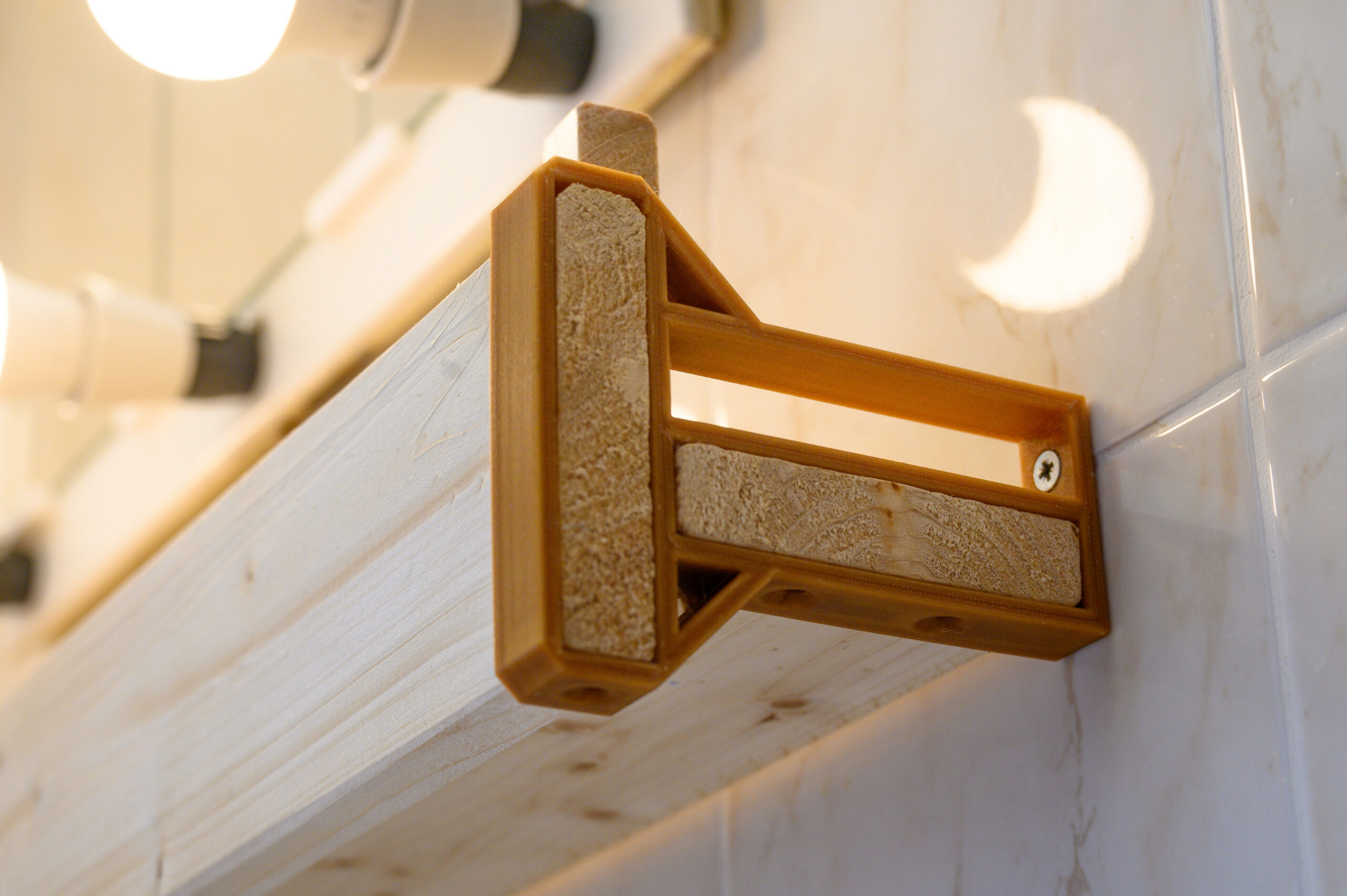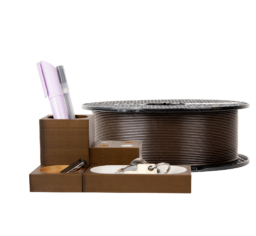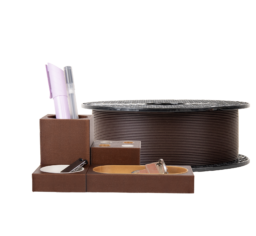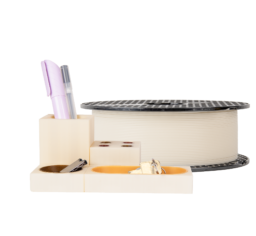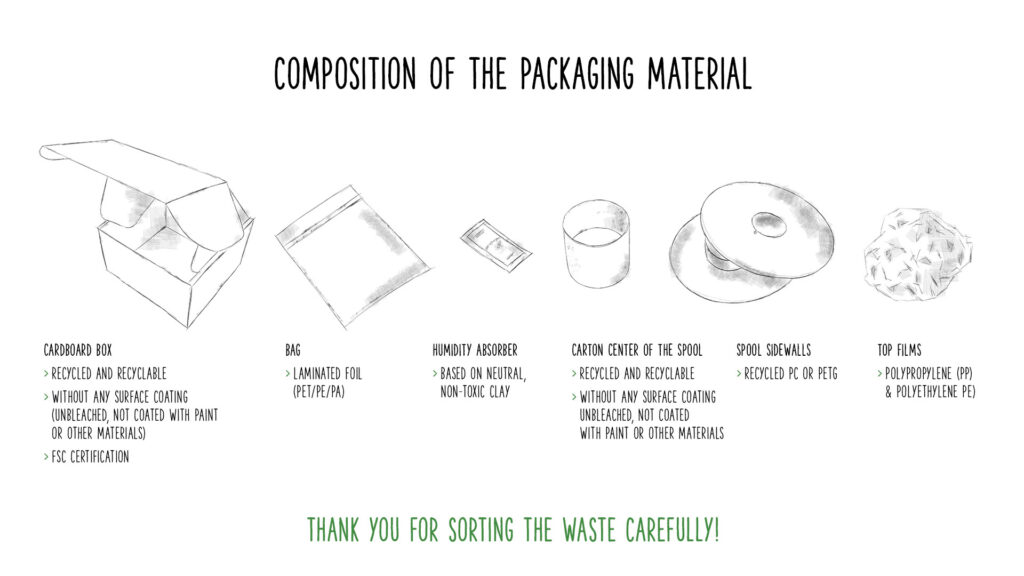
Prusament rPLA
Prusament rPLA Natural Pigments is our own in-house made filament with ±0.03mm manufacturing tolerance. 100 % of the material comes from recycled PLA foil manufacturing waste, coloring is made with biobased pigments from food and pharmaceutical industries.
Charakterystyka
Zalety
- Easy to print
- Nice subtle colors
- Can print tiny parts
- Can print huge objects
- Hard
- Low warping
Wady
- Brittle
- Low temperature resistance
- Difficult post-processing
- Higher moisture absorbtion
Zastosowanie
Furniture parts
Warm colors perfectly match wooden furniture and allow various designs and functional parts to be made.
Home decor
The pleasant and subtle colors make the rPLA Natural Pigments suitable for various home decor accessories.
Szczegóły
- Printing difficulty
- Easy
- Temperature resistance
- 59 °C
- Toughness
- Average
- Susceptibility to warping
- Low
- Odor
- Medium (non-toxic)
- Post processing
- Difficult
- Wet sanding
- Solubility
- Very difficult
- In dangerous chemicals
- Elasticity
- None
- Print speed
- Fast
- Details
- Under 0.2 mm
- Abrasivity
- None
- Hard to break
- No
Prusament rPLA Natural Pigments is our in-house made PLA filament with ±0.03mm manufacturing tolerance and natural pigments. The filament is made of recycled PLA from industrial waste. No artificial pigment is added, the coloring of this Prusament comes from processed organic waste, such as red algae. The organic additives create a noticeable scent during printing.
The Prusament rPLA Natural Pigments has mechanical properties similar to regular PLA, but it is slightly more brittle and hygroscopic. In general, PLA is used for various aesthetic models, prototypes, and other visual parts. With Prusament rPLA Natural Pigments, these parts can be made with significantly lower ecological impact. Last but not least, the natural pigments give rPLA pleasant subtle colors, perfectly suitable for various home decor and other aesthetic purposes.
Download Safety Data Sheet (PDF)
Printer requirements
| Bed | Temperature: 40–60 °C Heated Bed Optional Enclosure not required |
|---|---|
| Print Surface | PEI Glass plate Painter’s tape Glue stick |
| Extruder | Temperature: 205 ± 10 °C No special hot-end required |
| Cooling | Part Cooling Fan Required Fan Speed: 100% |
Porady i wskazówki dla początkujących
Print surface preparation
To achieve the best adhesion of the print surface, it is important to keep it clean. Cleaning the surface is simple: the best option is Isopropyl alcohol (available in drugstores) which works best not just for PLA, but other materials as well.
Pour a small amount of IPA on an unscented paper towel and wipe the print surface. The bed should be cleaned when it’s cold for the best results but it can also be cleaned when already preheated for PLA, just be careful not to touch the bed surface or the nozzle. But keep in mind that when cleaning at higher temperatures, the alcohol will evaporate before it can clean anything. Alternatively, you can clean the bed with warm water and a few drops of dish soap on a paper towel. Denatured alcohol is also another option.
Sanding
When post-processing PLA, it’s better to use wet sanding. Without water you’ll quickly start heating the plastic by friction, it will melt locally and make it hard to keep sanding.
Cooling
Feel free to cool PLA during printing as much as possible. With good enough cooling you can print extreme overhangs and bridge between far away surfaces.
Number of perimeters & strength
If you’re in need of a durable part, increase the number of perimeters rather than increasing the infill percentage as the majority of a 3D print strength comes from its outer shell.

